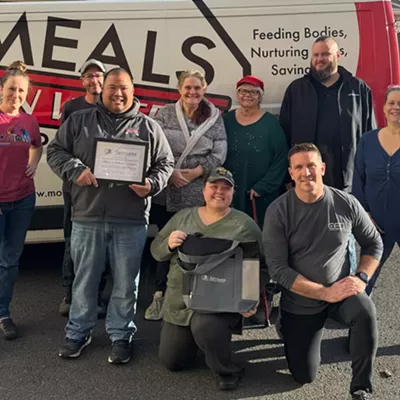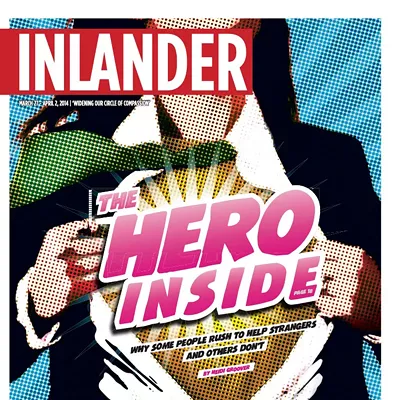
In her early 40s, Kerry Anne McGinn was no stranger to breast lumps, pain and even surgery. She’d been through a biopsy that found no cancer but stressed her out just the same. One doctor even called her a “cyst farm.”
Yet every time doctors told her the painful changes she was experiencing weren’t breast cancer, McGinn felt just as bewildered as relieved.
A nurse practitioner, McGinn knew breast cancer rates in women younger than 60 are drastically lower than those for older women. And she knew most of the breast changes she would experience would have nothing to do with breast cancer.
But she still wanted to understand them.
After finding only information focused on cancer, with what seemed to be afterthoughts on benign changes, McGinn set out to solve that problem. So, in 1987 she wrote the first edition of her book, Keeping Abreast.
This year the Spokane resident has released the fourth edition of that book, with a new title and a new goal. In The Young Woman’s Breast Health Book, McGinn details benign breast changes for those women who will experience them most. She’s hoping the book will also turn some of the conversation about breast health to these sorts of benign changes.
“Because the focus is on breast cancer — and rightly so, in many ways — it means that very few research dollars are spent on benign breast problems,” McGinn says. “It just isn’t an interesting topic in the way that breast cancer is, but women suffer still.”
Most changes women will experience to their breasts have nothing to do with cancer, McGinn says, and she’s distraught by how much worry and stress women who don’t know that undergo.
The book is comprehensive, but consistently calming and easy to understand. It outlines the science behind benign breast changes — what causes them, how they feel and why — plus ways to manage the discomfort or pain they can cause.
But it also addresses some of the more subtle side-effects of these changes — the effects McGinn says doctors don’t talk about much. McGinn hopes to relieve some of the stress that comes with a constant fear of breast cancer.
“People have gotten so freaked out about their breasts,” McGinn says. “A lot of young women think breast pain means cancer. Even knowing that having breast pain does not mean you have breast cancer is a very reassuring fact for a lot of women.”
More reassurance can come from understanding the numbers. In the book, McGinn probes the widely stated “one in eight women will get breast cancer” statistic. In fact, as she and other health care providers point out, that figure is drastically dependent on age and other risk factors.
Each stage of life brings a certain risk of developing breast cancer, but because much of the risk is associated with wear and tear on the body, the risk increases with age. The risk of developing breast cancer for a woman in her 20s is just .06 percent — or one in every 1,681. That number increases with age, and by the time she reaches her 70s, a woman’s risk is about one in 27.
Doctors have added up the risk for a woman in her 20s, 30s, 40s and so on to come to the one-in-eight number as a “lifetime risk.” Not only are young women’s risk levels lower, but the fact that women are living longer skews the numbers upward.
Spokane pathologist Thomas Bassler, whom McGinn asked to review parts of the book for accuracy, says giving women perspective on breast cancer statistics is crucial.
“The whole statistic thing is exceedingly important. The one-in-eight that everyone throws out, that’s huge,” he says. “If she does anything to calm that down, that would be great.”
McGinn also hopes the book will help women put some of what they’ve heard about breast science into context. Doctors have come to understand that early detection of breast cancer “is valuable, but it isn’t the whole thing,” McGinn says. So her work also addresses cancer prevention and explores different detection techniques — like mammography and self-exams, which have both endured criticism in recent years about how effective they are for younger women.
Rockwood Breast Health Center surgeon Deborah Martinez, another doctor McGinn consulted for the book, says she looks forward to handing the guide out to patients. Martinez, who’s been in the field for more than 30 years, says patients are much more informed than they used to be because they’re researching breast health online.
“Women are asking more questions than they ever used to,” she says.
That can have a downside, though. Recently, Martinez saw a patient experiencing redness and swelling on one of her breasts. The woman was already convinced she had an aggressive form of breast cancer because of information she’d read online. Martinez says she’s glad women are looking for information, but she wants them to be more skeptical and stay calm and open-minded.
“It’s a double-edged sword. Sometimes there’s good information and sometimes it’s just to scare you,” Martinez says. “That’s why this book is good. It’s credible, and it’s done with a really good intention.”

















